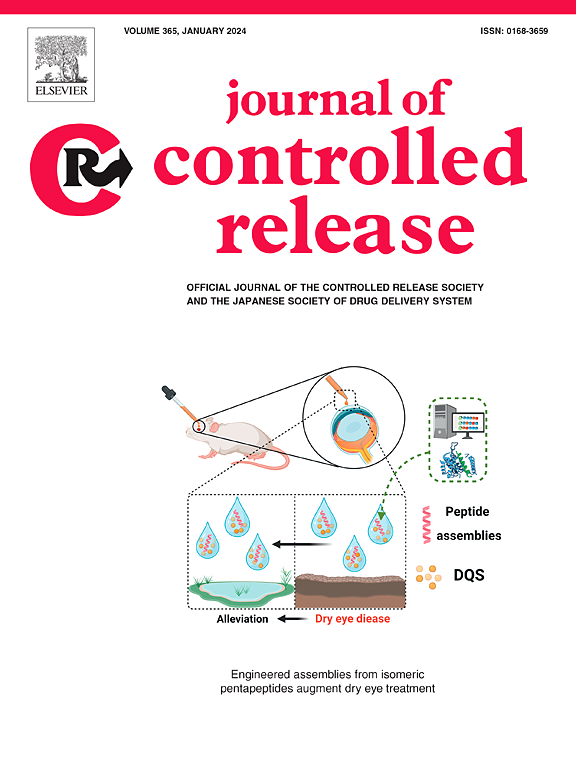Stimuli-responsive hydrogel with spatiotemporal co-delivery of FGF21 and H₂S for synergistic diabetic wound repair
IF 10.5
1区 医学
Q1 CHEMISTRY, MULTIDISCIPLINARY
引用次数: 0
Abstract
Chronic diabetic wounds pose significant clinical challenges due to persistent inflammation, impaired angiogenesis, and disrupted cellular homeostasis. To address these multifactorial barriers, we engineered an injectable, biodegradable, and biocompatible methylated silk fibroin (SilMA) hydrogel system co-loaded with cobalt sulfide (CoS) and fibroblast growth factor 21 (FGF21), designed for on-demand therapeutic release. In the acidic microenvironment characteristic of the inflammatory phase of diabetic wounds, the hydrogel rapidly releases hydrogen sulfide (H₂S) and Co2+ ions, mitigating inflammation and exerting antibacterial effects. Subsequently, during the proliferative and remodeling phases, sustained release of FGF21 promotes cellular proliferation, angiogenesis, and enzymatic homeostasis, thereby accelerating wound healing. Mechanistic studies reveal that the hydrogel facilitates M2 macrophage polarization and activates the JAK/STAT signaling pathway, leading to upregulation of vascular endothelial growth factor (VEGF). Additionally, it enhances antioxidant enzyme activities (superoxide dismutase, catalase, glutathione) while suppressing pro-oxidant enzymes (NADPH oxidase, lipoxygenase, cyclooxygenase). In vivo studies using a diabetic mouse model demonstrate that this dual-functional hydrogel significantly improves wound closure rates and tissue regeneration. These findings suggest that the SilMA-FGF21/CoS hydrogel represents a promising therapeutic strategy for the management of diabetic wounds.

求助全文
约1分钟内获得全文
求助全文
来源期刊

Journal of Controlled Release
医学-化学综合
CiteScore
18.50
自引率
5.60%
发文量
700
审稿时长
39 days
期刊介绍:
The Journal of Controlled Release (JCR) proudly serves as the Official Journal of the Controlled Release Society and the Japan Society of Drug Delivery System.
Dedicated to the broad field of delivery science and technology, JCR publishes high-quality research articles covering drug delivery systems and all facets of formulations. This includes the physicochemical and biological properties of drugs, design and characterization of dosage forms, release mechanisms, in vivo testing, and formulation research and development across pharmaceutical, diagnostic, agricultural, environmental, cosmetic, and food industries.
Priority is given to manuscripts that contribute to the fundamental understanding of principles or demonstrate the advantages of novel technologies in terms of safety and efficacy over current clinical standards. JCR strives to be a leading platform for advancements in delivery science and technology.
 求助内容:
求助内容: 应助结果提醒方式:
应助结果提醒方式:


